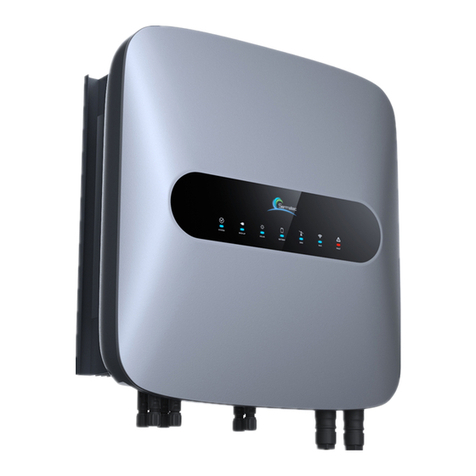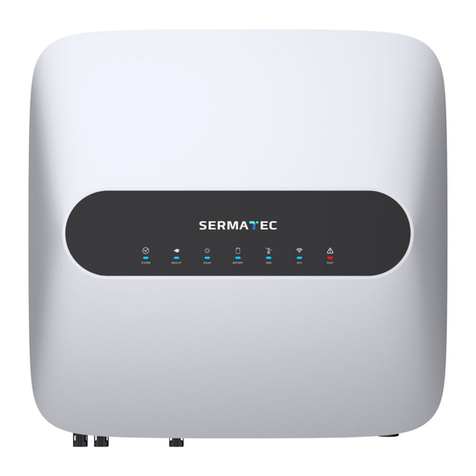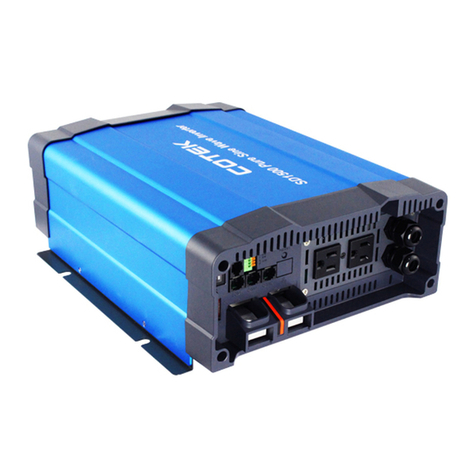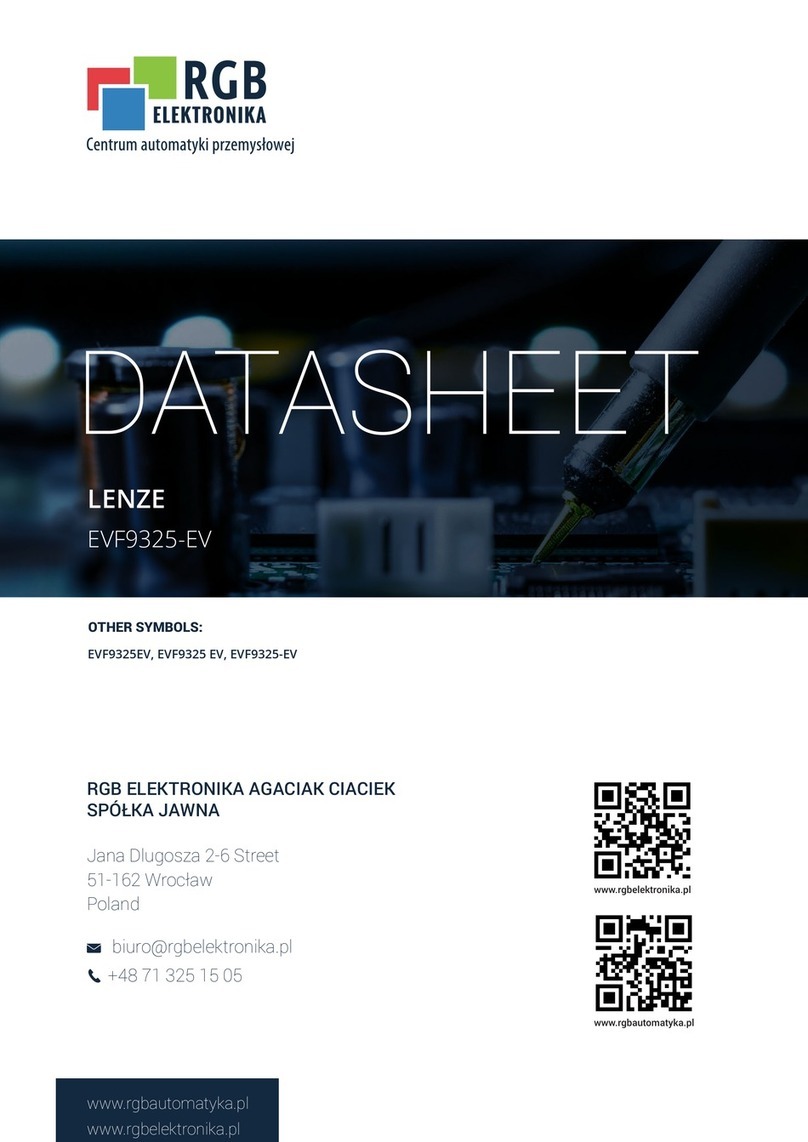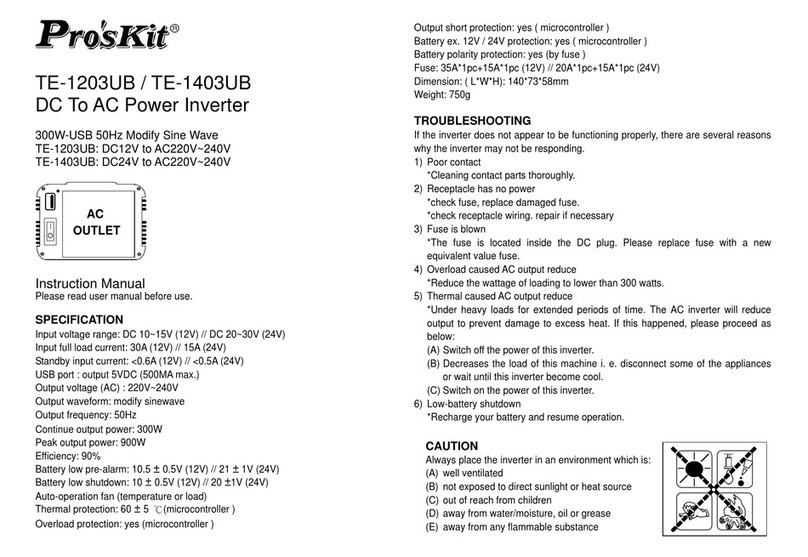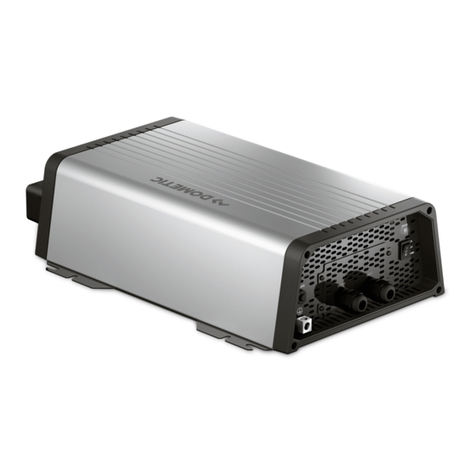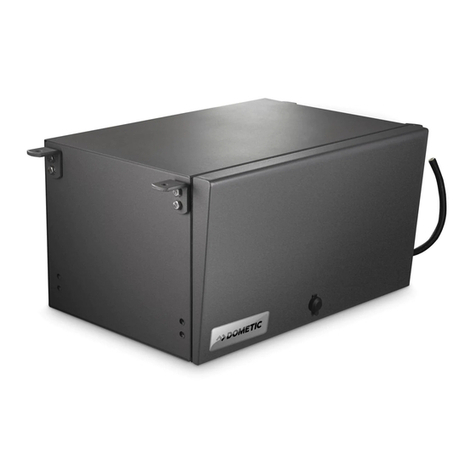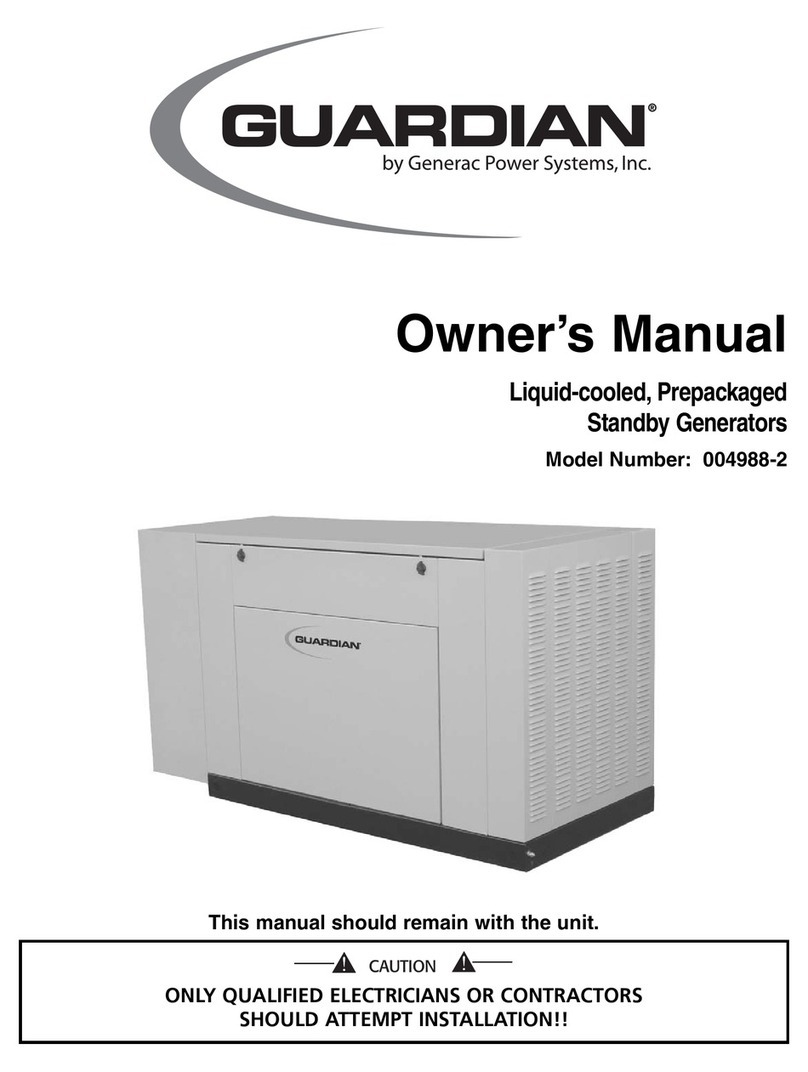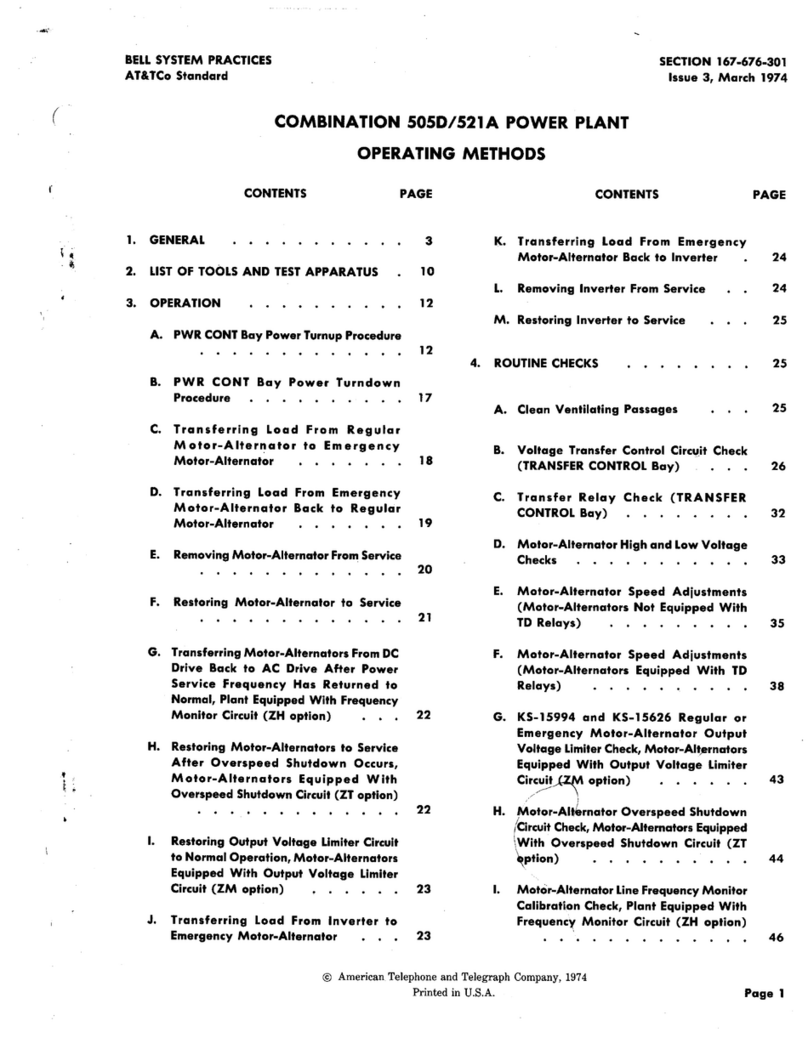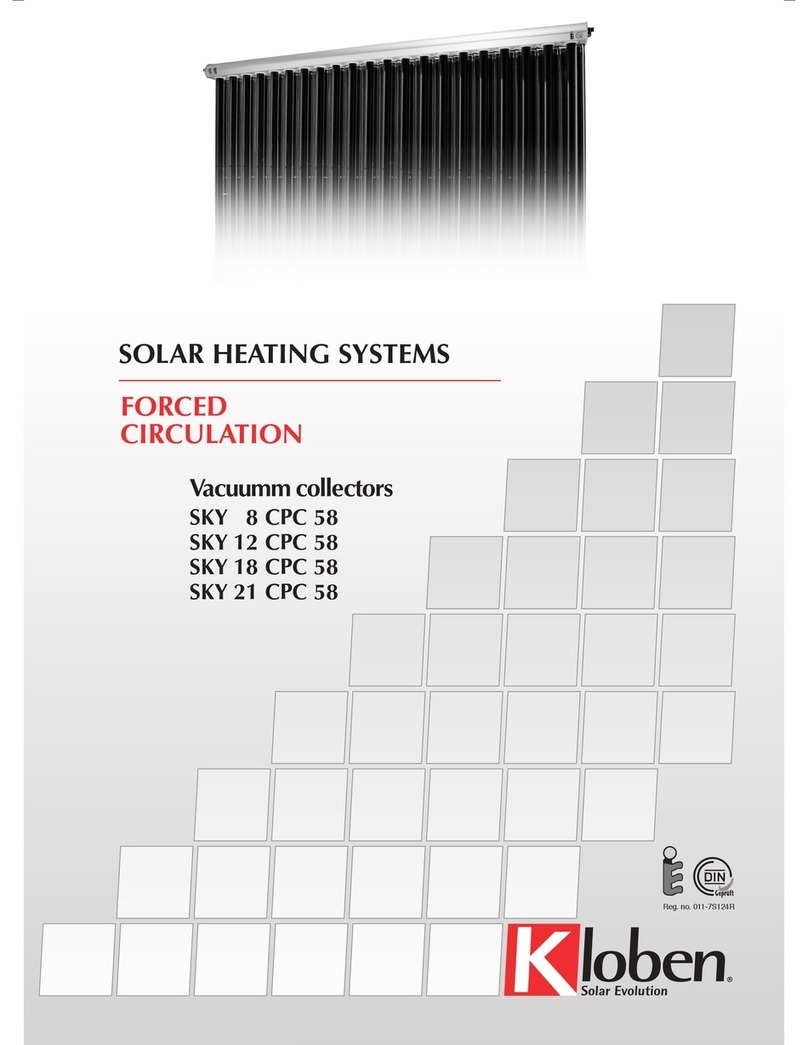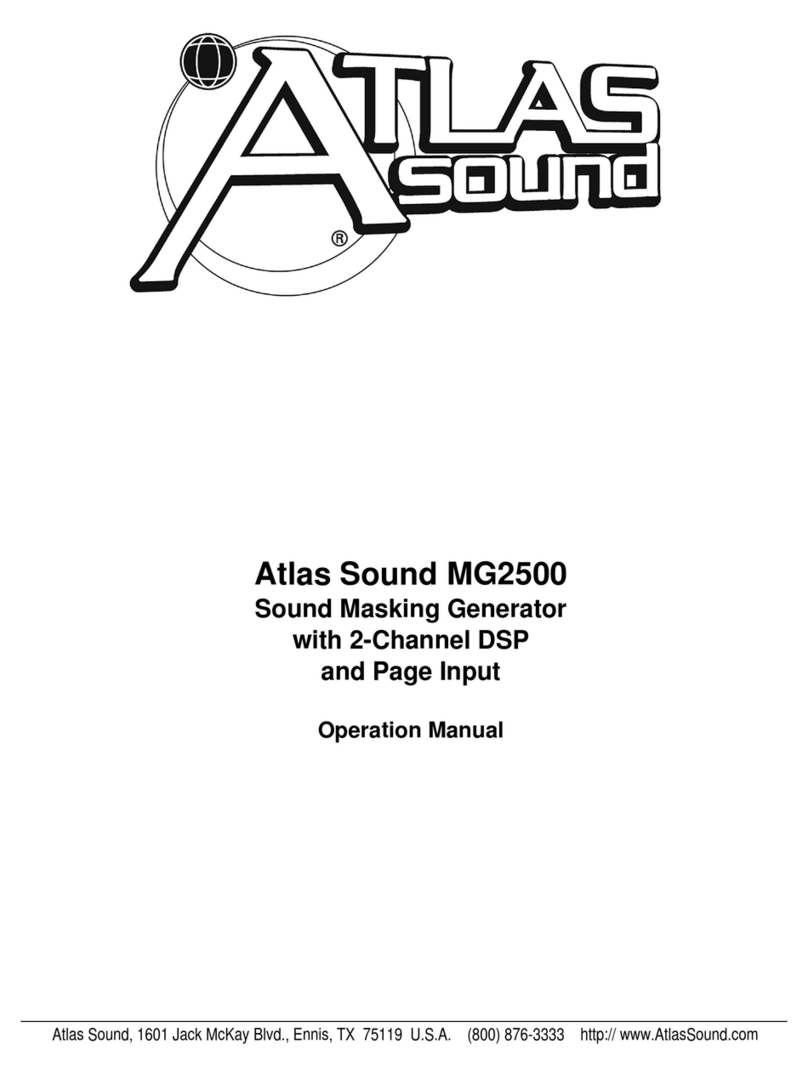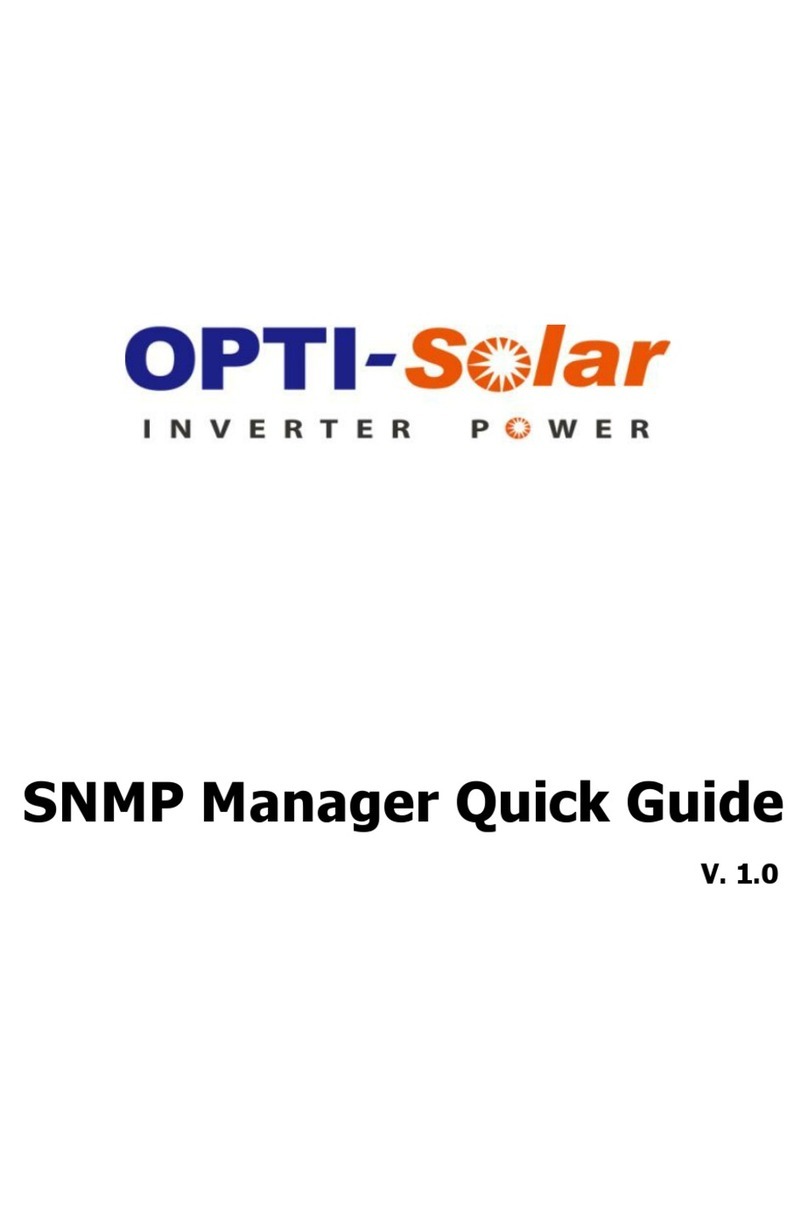Sermatec SMT-5K-TL-LV User manual

5kW All-in-one the Hybrid Inverter User Manual
Important Notice
In order to protect the legitimate rights and interests of users, please read our operating procedures and
safety instructions carefully before using this equipment. Please operate the equipment according to the
operating procedures and safety instructions.
Once using this device, you are deemed to have read, understood, endorsed and accepted all terms and
contents of the device's operating procedures and safety instructions. The User is committed to being
responsible for his or her actions and all consequences arising therefrom.
The User undertakes to use the device solely for legitimate purposes and agrees to these Terms and any
relevant national policies or guidelines.
In using this equipment, please strictly observe and implement the requirements including but not limited to
the operating procedures and safety instructions. All personal injury, accident, property damage, legal
disputes and other adverse events that cause conflicts of interest caused by violations of the user instructions
or force majeure indicated by the safety instructions are the responsibility and loss of the User. Our company
will not assume any responsibility.
Copyright, all rights reserved. The content is subject to change without notice.
Caution!
Failure to observe a warning indicated in this manual may result in injury.
The danger of high voltage and electric shock!
Refer to the operating instructions
Signals danger due to electrical shock and indicates the time(5 minutes)to
allow after the inverter has been turned off and disconnected to ensure safety
in any installation operation.
The danger of hot surface!
Protective earth

Installation Risk Notification
Warning
Wear protective gloves when handling equipment by hand to prevent cuts from
sharp objects.
Attention
Make sure the cable label is correct before connecting the cable.
Dangerous
Construction operation of high-voltage lines may cause fire or electric shock.
The area through which the AC cable is connected and routed must comply with
local regulations and specifications.
Please carry out construction following relevant construction safety regulations and standards to avoid safety
accidents. The person in charge of this product must undergo strict training, master the correct installation
method of the system and various safety precautions before proceeding with the equipment.
The installation location should avoid the location of low-lying water accumulation and should be kept at a
safe distance from the surrounding fire-explosive facilities and underground pipelines. The installation
location should be away from open flames, high temperature, dust and corrosive environment. The protection
grade of the selected product enclosure should be compared with the installation environment adapt.
The installation position strength must meet the requirements, all fixing bolts should be tightened, Otherwise
there is a risk of falling and dumping. Install the selected cables, terminals and other components to meet the
current requirements. Before and after installation, ensure that all wiring related to the charging equipment is
tight, well insulated, wired correctly, no wear and crush damage, Otherwise there is a risk of fire and electric
shock.
Before powering the device, confirm that the device is well grounded to avoid electric shock. If any part is
damaged during installation, it should be repaired and replaced in time to avoid damage.
Operation and maintenance risk notification
Equipment operation and maintenance must comply with electrical safety operating procedures, Otherwise
there is a risk of fire and electric shock.
The personnel responsible for the operation and maintenance of this product must have the qualifications of
high voltage and alternating current, etc., He must undergo strict training, master the correct operation
method of the system and various safety precautions, and then carry out various equipment operations
otherwise there may be a risk of electric shock.
Dangerous
There is dangerous voltage in the equipment when the system runs, and
non-professionals should not operate and maintain it.
Dangerous
Before maintaining the system clean, electrical connection, and ground
connection, be sure to cut off power . Otherwise, there is a risk of electric
shock and fire.

The energy storage equipment shall not be maintained when the power is not disconnected, otherwise there
will be a risk of electric shock.
It is strictly forbidden to wear conductive objects such as watches, bracelets, rings, etc, on the wrist during
operation.
There shall be no flammable and combustible materials around the energy storage equipment, and the
operation and maintenance personnel shall clean up in time, Otherwise there is a fire risk.
Operation risk notification
Do not use the system in the event of equipment failure. Do not operate without authorization when the
equipment is abnormal.
Please strictly follow the operating procedures and instructions on the energy storage equipment, and
comply with the industry's safety regulations, Otherwise there will be electric shock and fire risks.
Accidents such as fires, flooding of energy storage facilities, etc, are strictly forbidden to be close to energy
storage equipment. Please inform personnel familiar with the equipment and emergency treatment methods
for emergency treatment.

Modification record
The Document version A00 (2019.03.04)
The First release
The Document version A01 (2019.05.07)
1.2 Modify Working Mode
2.3.2 Add electrical connection diagram
3.1 Update pictures of APP
3.6.2 Note about Battery Lower Limit SOC
4.2 Add Software upgrade
5.3 Update Trouble Shooting
The Document version A02 (2019.06.03)
2.2.2 Update Figure2-2
2.3.2.4 Update Communication cable connection
The Document version A03 (2019.06.22)
2.3.2 Electrical Connection
Update Figure 2-13
The Document version A04(2019.08.17)
4.2 Software upgrade
The PCU software name is changed to “PCU5KSL.bin”
The DSP software name is changed to “DSP5KSL.bin”
The Document version A05(2019.12.04)
4.2 Software upgrade
Added to ensure the inverter is "OFF" before software upgrade
The Document version A06 (2020.05.30)
2.2.1 Update Figure 2-1, Figure 2-2
2.3.2.4 Update Figure 2-23
The Document version A07 (2021.04.28)
3 Sermatec Mate APP
4 System Commissioning
The Document version A08 (2021.09.28)
3 delete Sermatec Mate APP descriptions
4 delete software upgrade descriptions in System Commissioning
The Document version A09 (2022.09.07)
Modify Indicator Description
Modify Technical Parameters

Contents
1 Summary ...........................................................................................................................1
1.1 The description of the model ..............................................................................................1
1.2 Compose and Operating Principle .................................................................................... 1
2 Installation ........................................................................................................................7
2.1 Safety regulations ................................................................................................................ 7
2.2 Installation preparation ......................................................................................................8
2.3 Installation ......................................................................................................................... 10
2.4 Installation check .............................................................................................................. 21
3 Sermatec APP ................................................................................................................ 23
3.1 Software acquisition ..........................................................................................................23
3.2 Connect to internal Wi-Fi .................................................................................................23
4 System Commissioning ................................................................................................ 24
4.1 Check before commissioning ............................................................................................24
4.2 Power on and Off .............................................................................................................. 24
5 Product Maintenance .....................................................................................................26
5.1 Routine Maintenance ........................................................................................................ 26
5.2 LED Status .........................................................................................................................27
5.3 Trouble Shooting ............................................................................................................... 28
6 Technical Parameters ....................................................................................................38


1
1Summary
The 5kW all-in-one hybrid inverter (hereinafter referred to as the Hybrid Inverter) can realize Hybrid
Inverter for photovoltaic charging, DC terminal battery charging and discharging, and AC terminal
grid-connected applications.
This chapter describes the model, composition and configuration and working principle of the Hybrid
Inverter.
1.1 The description of the model
Take 5kW power as an example for model description.
Hybrid Inverter model: SMT-5K-TL-LV
The model description is shown below:
Figure1-1 5kW Hybrid Inverter all-in-one model description
1.2 Compose and Operating Principle
The Hybrid Inverter is composed of a power unit (battery charging and discharging circuit, boost and
buck circuit, inverter circuit, auxiliary power source, filter circuit), system control unit, and a system
monitoring unit (including a system communication unit) etc.
This product generally applies to solar storage system, the system is mainly composed of PV panels,
battery, hybrid inverter, local load, Grid etc.The system can realize the functions of transmitting PV power
to Grid, supplying backup load by PV or/and Battery, charging Battery by PV or/and Grid etc.After
carefully research, five work modes are well designed to meet most scenarios, ensure the PV power
generation effectively, supply the backup load reliably, preserve the service time of the battery as long as
possible, etc.
The schematic diagram of the primary circuit of the Hybrid Inverter is as follows: 1. the battery side is
considered as DVC-C circuit; 2.The wire N of back up port is connected to grid neutral via internal relay
when the unit works in stand-alone mode.

22
Figure1-2 The Hybrid Inverter principle topology
Work Modes:
Five working modes: General mode, Energy Storage mode, Micro-grid mode, Peak-Bottom mode and
AC coupling mode. The Inverter must be configured in APP before powering on: working parameters
(Grid standard, DC side battery type, battery protocol, meter protocol), working mode, (working mode,
utility power price, period setting) ,and other parameters if neccessary. As shown in the figures below:
Figure1-3 Figure1-4

3
Mode 1: General mode (Default)
Suitable for Areas with Stable Grid
1. If PV power is sufficient, PV power will supply to the load, then charge the battery, feeding into a grid at
last if still surplus power (Anti-back-flow is forbidden). (Figure1-5)
2. When PV power is insufficient, batteries and the grid supply power to the load together with insufficient
PV. (Figure1-6)
3. Anti-back-flow is default disabled.
Typical application scenarios:
Figure1-5 Figure1-6
Mode 2: Energy Storage mode
Suitable for Areas with Unstable Grid
1. PV and grid supply power to load and charge batteries together. (Figure1-7)
2. When the Grid is normal, the battery SOC is always in full state.
3. Batteries discharge only when the grid is abnormal.
4. Anti-backflow is default to enable.
Typical application scenarios:
Figure1-7 Sunny Day Figure1-8 Grid is normal

44
Figure1-9 Grid is abnormal
Mode 3: Micro-grid mode
Suitable for Areas without Grid
1. The Micro-grid power source comes from PV, battery.
2. If PV is sufficient, PV power will supply to the load, then charge the battery. (Figure1-10)
3. When PV is insufficient, Battery supplys power to the load. (Figure1-11)
Typical application scenarios:
Figure1-10 Sunny day Figure1-11 Night
Mode 4: Peak-Bottom mode
Suitable for Areas with Changing Electricity Price
According to the electricity price of utility, the whole day can be divided into four periods (most of the
place): tip, peak, flat and bottom price.
1. During the price of the bottom period, the grid or/and PV charge the batteries and supply to loads
together to storage the electric power. Battery never discharge at this stage.
2. During the price of the flat period, when the PV is sufficient, it provides power in the sequence of
load,battery and grid.
3. During the price of tip and peak period, the battery and PV provides power to the laod, if more
energy will sell to Grid to obtain profit. Battery never charges at this stage.

5
Figure1-12 Grid price
In Bottom Time Period:
Figure1-13
In Flat Time Period:
Figure1-14 PV is insufficient Figure1-15 PV is sufficient
In Tip and Peak Time Period:
Figure1-16 PV is insufficient Figure1-17 PV is sufficient

66
Mode 5: AC Coupling mode
Suitable for the scenario that grid-tied inverter already there
Cooperate with the existing grid-tied inverter to build a storage system to get more profit. The joint point
is the Grid side or AC terminal.
1. Inverter communicates with CT (smart meter), CT is used to detect the on-gird power;
2. When PV surplus, battery with low SOC (less than 100% ): Surplus PV will firstly provides to
loads(backup loads and AC grid loads),then charge the battery ,lastly sell to grid;
3. When PV surplus, battery with full SOC: PV supply power to the load firstly, and then the rest power of
PV will feed into the grid;
4. When PV insufficient: Battery and PV supply power to the load simultaneously; Battery and grid
supply power to the load simultaneously when battery with lower limit of SOC or discharge power not
enough;
5. Off-grid: Battery supply power to backup load;
6. APP will display: Battery charge/discharge power; Backup load power; AC grid load power, and
on-grid power.
Note: CT must be installed under AC-coupling working mode, CT self-checking default enabled, the
device will not start if the CT self-checking(meter detection) failed.
Meter/CT here only communicates with hybrid inverter, so if you enable anti-backflow it works for hybrid
inverter only, cannot work on grid-tied inverter as Sermatec inverter cannot control the grid-tied inverter.

7
2Installation
This chapter describes the installation and wiring of the Hybrid Inverter.Please strictly follow the
instructions in this chapter to install and wire connection.
2.1 Safety regulations
The Hybrid Inverter has high voltage and large current inside. To ensure personal safety, the following
regulations should be noted at all times.
The Hybrid Inverter can only be installed by personnel who have received training in the Hybrid Inverter
and have a good knowledge of the Hybrid Inverter. During the installation process, always observe the
safety precautions and local safety regulations before the catalog of this manual;
Do not operate or maintain the inside of the system during thunderstorms or wet weather to prevent
electric shock;
If operating inside the Hybrid Inverter, ensure the system is not powered on.
If the hybrid inverter is equipped with an anti-theft lock, please be sure safe keeping of the key.

88
2.2 Installation preparation
2.2.1 Unpacking inspection
Only when the goods arrive at the installation site can the unpacking box be allowed to be inspected. The
inspection is completed by the customer's representative and the supplier's representative. Unpack the
package, review the checklist.
Figure2-1 Packing list
Figure2-2 The Hybrid Inverter Overview

9
2.2.2 Cable and Air switch preparation
Note: Be sure all cables withstand voltage, temperature-resistance equal to or better than the recommended
model, and complying with relevant regulation of the electrical industry.
Selection of switch
Table 2-2 Table 2-3
2.2.3 Installation Kit
1. Electric drill (drilling bit: ¢8mm)
2. Screwdriver (Philips screwdriver: M3、M6; Flathead screwdriver: M3)
3. Wire stripper(4~6mm²)
4. Wire crimper 1 (Model: H4TC0001; Manufacturer: Amphenol)
5.Wire crimper 2( OT terminal, 4~6 mm²)
6. Open-end wrench (Model: H4TW0001; manufacturer: Amphenol)
7. Multimeter
2.2.4 Installation requirements
1. Wall bracket Installation
1) It is necessary to ensure that the installation position is flat and the thickness of the whole wall exceeds
100mm.
Serial Cable Name Recommended
model
cross-sectional area
(mm²)
Color of cable Cable OD
(mm)
1 PV side DC
positive and
negative input
UL1015 12AWG 3.31 Red、Black 4.00±0.15
2 Battery side DC
positive and
negative input
UL10269 4AWG 16-25 Red、Black 10.00±0.30
3 AC output UL1015 10AWG 4~6 Red、Black
Yellow-Green
4.60±0.20
Recommended AC switch
AC Load
AC Grid
Rated
voltage
≥250V AC
≥250V AC
Rated
current
32A
32A
Recommended DC switch
PV(option)
Battery(option)
Rated
voltage
≥580V DC
≥58V DC
Rated
current
16A
160A

1010
2) Ensure the installation wall is vertical to the ground. If it is sloping ,the tilt angle is only allowed to be less
than 15°.
3) Ensure the installation wall is solid enough to meet the requirements of load bearing for the hybrid inverter.
4) The mounting position is supposed to avoid direct sunlight.
Figure 2-3 Perpendicularity requirement
2. Installation space requirements
Product installation position, leave 300 mm of space for maintenance and heat dissipation left, right and front
Figure 2-4 Mounting distance
2.3 Installation
2.3.1 Mounting
STEP 1: Mark mounting hole on the wall Drill hole with 8mm diameter of bit. Ensure a depth of 80mm.

11
Figure 2-5 Mounting hole
STEP 2: Hammer expansion tube into the wall mount bracket on the wall, keep aligned with the holes.
Figure 2-6
STEP 3: Mount the Sematec hybrid inverter on the bracket.
Figure 2-7
STEP 4: Secure the inverters with M6 screw on the right side.

1212
Figure 2-8
STEP 5: Install anti-theft lock if necessary ( Optional, equipped by user).
Figure 2-9
2.3.2 Electrical Connection
Hybrid Inverter System Connection Diagram
Figure 2-10 Hybrid Inverter System connection Diagram
For AU/EN:

13
Figure 2-11
For Other Countries:
Figure 2-12
Power Meter connection diagram:
Figure 2-13 (Acrel Single phase Meter)

1414
Dangerous
1) Make sure all switches are at the closed(disconnect) position before the electrical connection.
2)Only qualified installation person can implement the installation of AC and DC input cable.
2.3.2.1 Connect PV cable
Attention
It is strictly prohibited to connect positive poles( PV1+、PV2+、BAT+) and negative (PV1-、PV2-、
BAT+) reversely or incorrectly. Otherwise it would affect normal operation, or even cause damage
and other serious consequence.
The length of the external cable to the PV side and battery side is suggested to be less than 30m.
PV array should not be connected to the grounding conductor.
The minimum insulation resistance to the ground of PV panels must exceed 34kΩ, there is a risk of
shock hazard if the minimum resistance requirement is not met.
STEP 1: Check and verify PV rotary switch is at the OFF position.
ON
OFF
Figure 2-14
STEP 2: Follow the requirement to cramp and connect the H4 connector to a cable which can find from
installation kits.
Crimp the H4 connector to the cable as required.
Figure 2-15
Table of contents
Other Sermatec Inverter manuals
Popular Inverter manuals by other brands

Leroy-Somer
Leroy-Somer Powerdrive MD2R 100T Installation and Maintenance
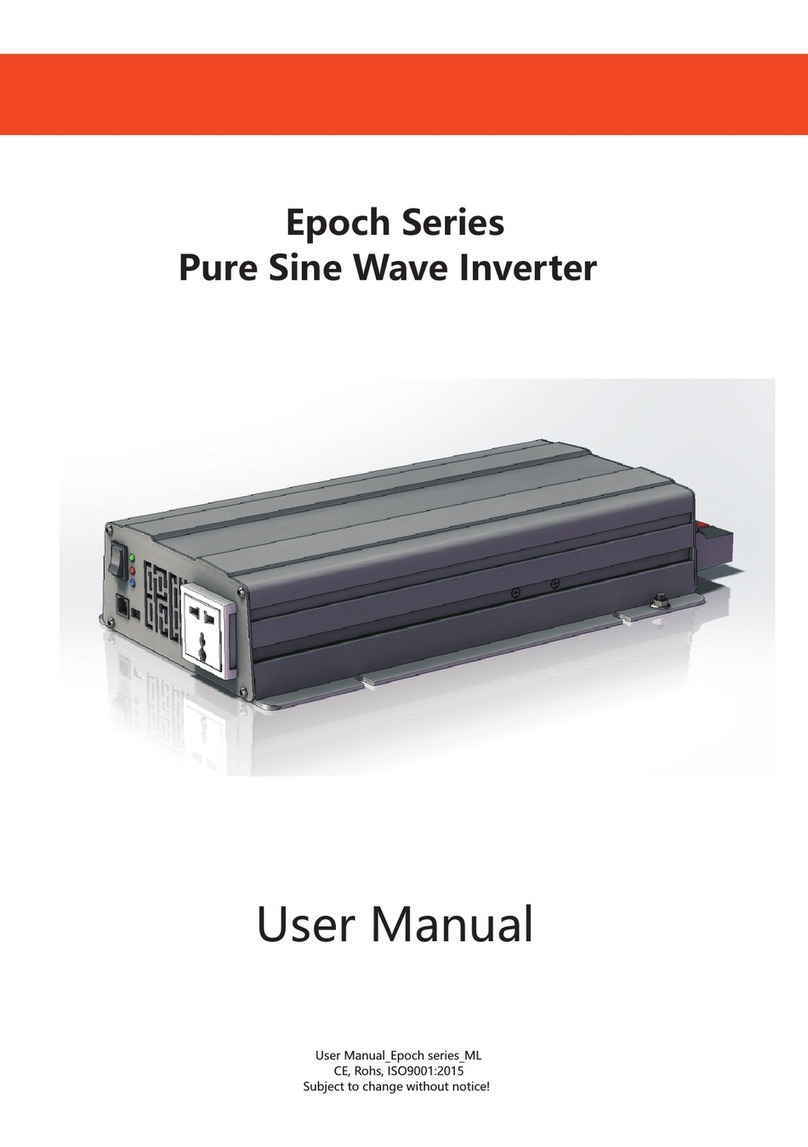
Lumiax
Lumiax Epoch Series user manual
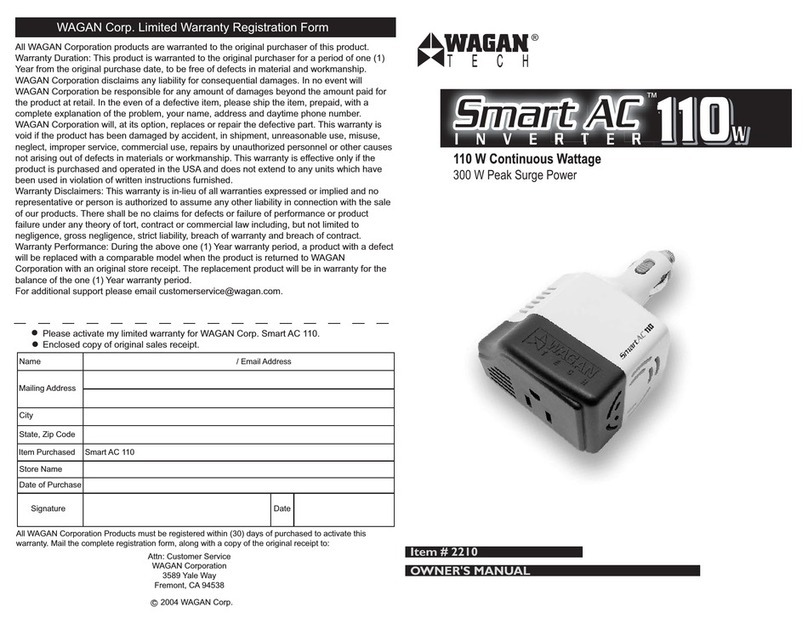
Wagan
Wagan AC SMART110W 2210 owner's manual
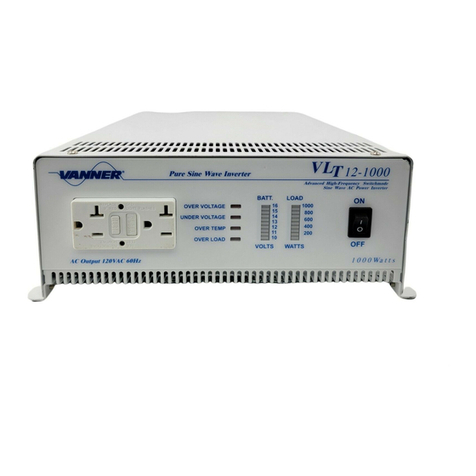
Vanner
Vanner VLT12-600 owner's manual
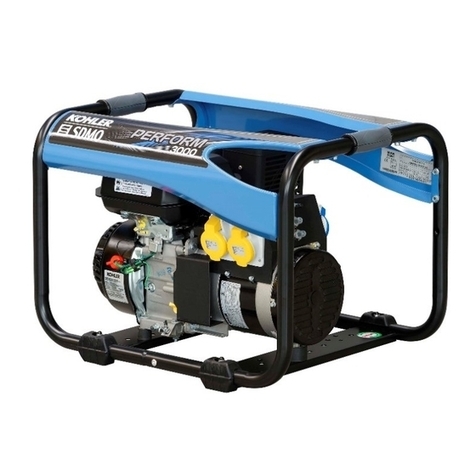
SDMO
SDMO KOHLER PERFORM 3000 TB UK C5 Instruction and maintenance manual
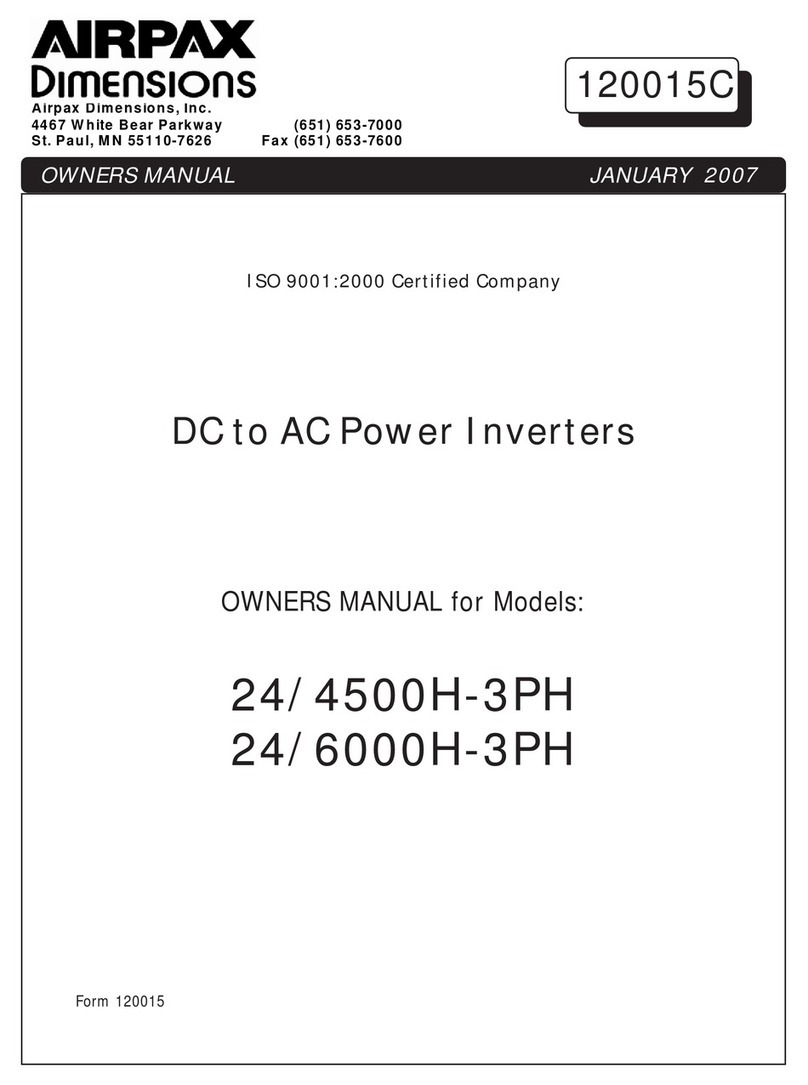
Airpax Dimensions
Airpax Dimensions 24/4500H-3PH owner's manual
